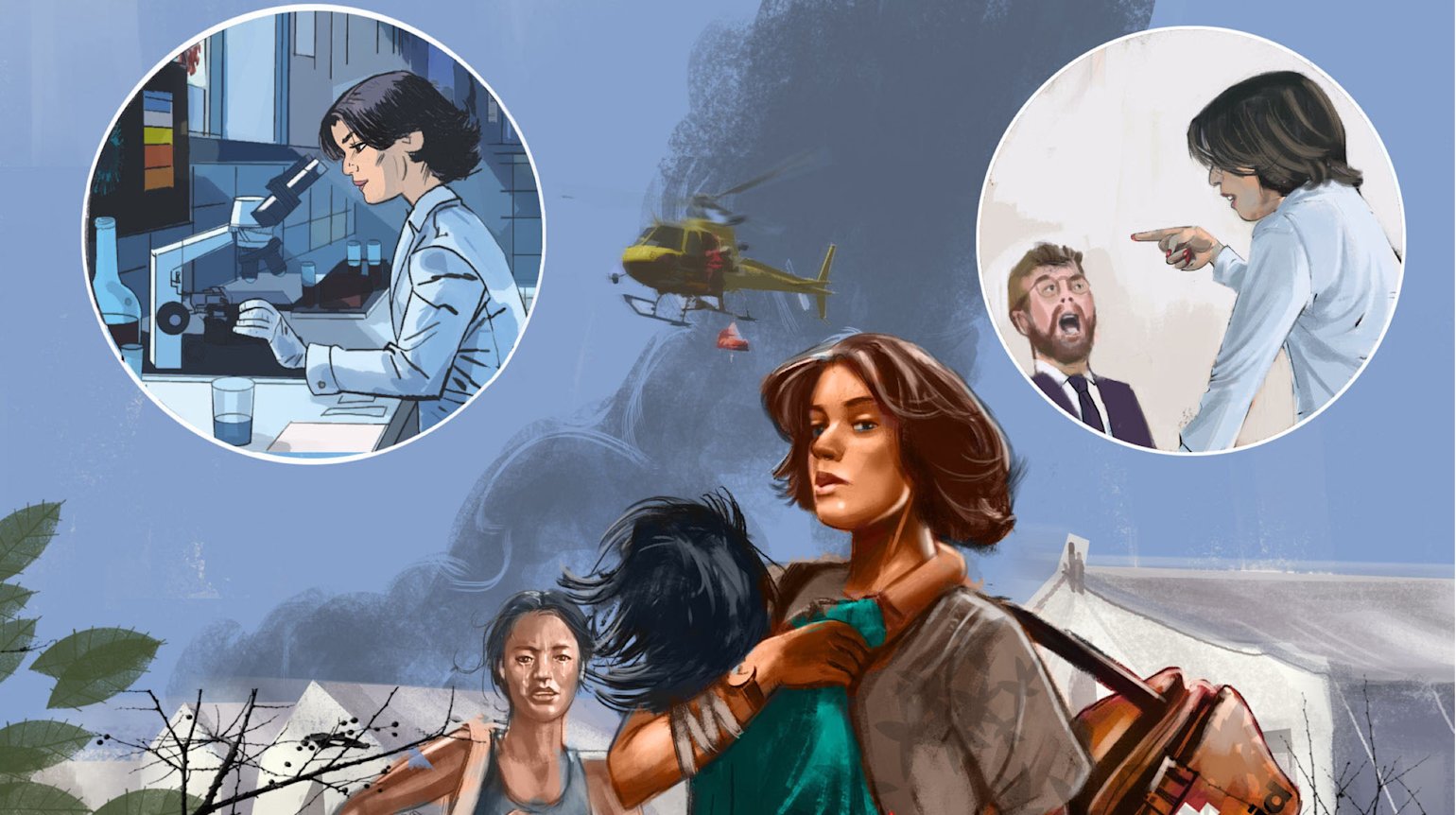Coronavirus (COVID-19) Updates
For the latest COVID-19 information and updates from Qatar Foundation, please visit our Statements page

Dr. Spencer Striker and Dr. Anto Mohsin of QF partner university Northwestern University in Qatar – the creators of a mobile game app on detecting the outbreak of disease – on why, when it comes to engaging students, video games and teaching are intrinsically linked
What does good game design have in common with good teaching? As it turns out: an awful lot.
Effective game design requires the designer to engage the player in a compelling system that intrigues them, challenges them, and draws them in further and further – continuously presenting the player with a new challenge whose difficulty resides at the threshold of what the player can handle. Meanwhile, this process of developing mastery and ‘leveling up’ is inherently pleasurable and rewarding for the player as it occurs in a balanced, immersive problem space.
Sound familiar? That’s exactly what a well-designed classroom seeks to achieve as well. As teachers, like game designers, we strive to intrigue students and engage them in an intellectually stimulating problem space; present them with challenges at the upper threshold of their individual competency, (known as the “zone of proximal development”); and reward them with intrinsic and extrinsic payoffs as they progress through a well-structured system.

Dr. Anto Mohsin

Dr. Spencer Striker
Bad teaching and bad game design correlate strongly, too. If the game is far too easy, it’s boring; if it’s far too hard, it’s demoralizing); if it’s poorly paced and unbalanced, it’s confusing; if it’s delivered too quickly, there is information overload and if it’s delivered too slowly, it’s still boring!. The player will say “this game is lame,” and put it down. Similarly, the student will say “science is boring,” and turn away from the subject, sadly, with the wrong impression.
The key idea is that learning is inherently pleasurable, and as natural to the human mind as breathing. You need only observe how a child wants to grab everything and learn what it's about: natural, insatiable curiosity. We want to learn; we are programmed to learn. Building domain mastery is deeply rewarding, giving the mind a sense of purpose, progress, and achievement. So, when students say “science is boring”, what they really mean is that the game they played or the curriculum they used to learn science was badly designed and not fun.
The theory and practice of using video games in the classroom stretches back 50 years, to 1971’s Oregon Trail. The modern field of games and learning research was developed by James Paul Gee at the University of Wisconsin (in the School of Education where Dr. Striker earned his doctorate) and established in the 2004 book What Video Games Have to Teach Us About Learning and Literacy, which includes 36 learning principles. Examples include "Psychosocial Moratorium" Principle, wherein Gee explains that in games, learners can take risks in a space where real-world consequences are lowered. In “Identity Principle”, Gee identifies how games involve taking on and playing with identities in such a way that the learner has real choices (via virtual identity) and ample opportunity to meditate on the relationship between new identities and old ones. In “Multimodal Principle”, meaning and knowledge are developed using various modalities (images, symbols, interaction, animation, sound design, music), not just traditional text.

In A New Culture of Learning (2011), Thomas and Brown demonstrate how play, innovation, and the cultivation of imagination are the new cornerstones of learning—providing unprecedented learning opportunities for people that engage with technology. As Raph Koster writes in A Theory of Fun for Game Design: “That’s what games are, in the end. Teachers. Fun is just another word for learning.” And James Gee observed, quoted in Josh Lerner’s book Making Democracy Fun How Game Design Can Empower Citizens and Transform Politics: “games convey meaning and knowledge through images, words, sounds, and other modalities.”
Building on this rich tradition of games and learning research and inspired by the COVID-19 pandemic, our new mobile game, Dr. Sara: Disease Detective (funded by a competitive grant from the Hamad Bin Khalifa University Innovation Center), immerses and engages students through role-playing, meaningful choice, and multimodal interaction design. Users play it within a problem space in which students take on the role of the world’s greatest disease detective, in a character-driven simulation of Epidemic Intelligence Service (EIS) detective work - investigating and solving outbreaks around the globe.
Dr. Sara is a brave, brilliant disease detective taking on severe and perplexing outbreaks in hotspots around the world-searching for the index case, connecting seemingly disparate dots, confronting fear, both personal and societal-all the while racing against time to find clues to a cure. Like a cross between Lara Croft and Dr. House MD, Dr. Sara is equally at home in the lab, in the field, and on duty in the emergency room.

Dr. Sara: Disease Detective features high stakes time pressure, compelling characters, narrative design, challenging puzzles, and the natural gameplay dynamics that emerge from network science and contact tracing. Fun, intuitive gameplay features include visual novel style interactive dialogue; original character design mini-games about social distancing; hidden object investigation; Cluedo-style logic puzzles; collectible scientific vocabulary; game-based learning techniques; cinematics, visual effects, exciting music and immersive sound design.
We hope that the immersive design of Dr. Sara: Disease Detective will capture users’ curiosity and propel them to develop a lifelong interest in science, medicine, technology, and public health. It is our hope that this game will help increase public engagement with science.
Dr. Sara: Disease Detective has been nominated for Best Educational App at the 2021 Reimagine Education Awards, which recognize innovative approaches that enhance student learning outcomes and employability. It can be downloaded from the Apple Store and Google Play.


